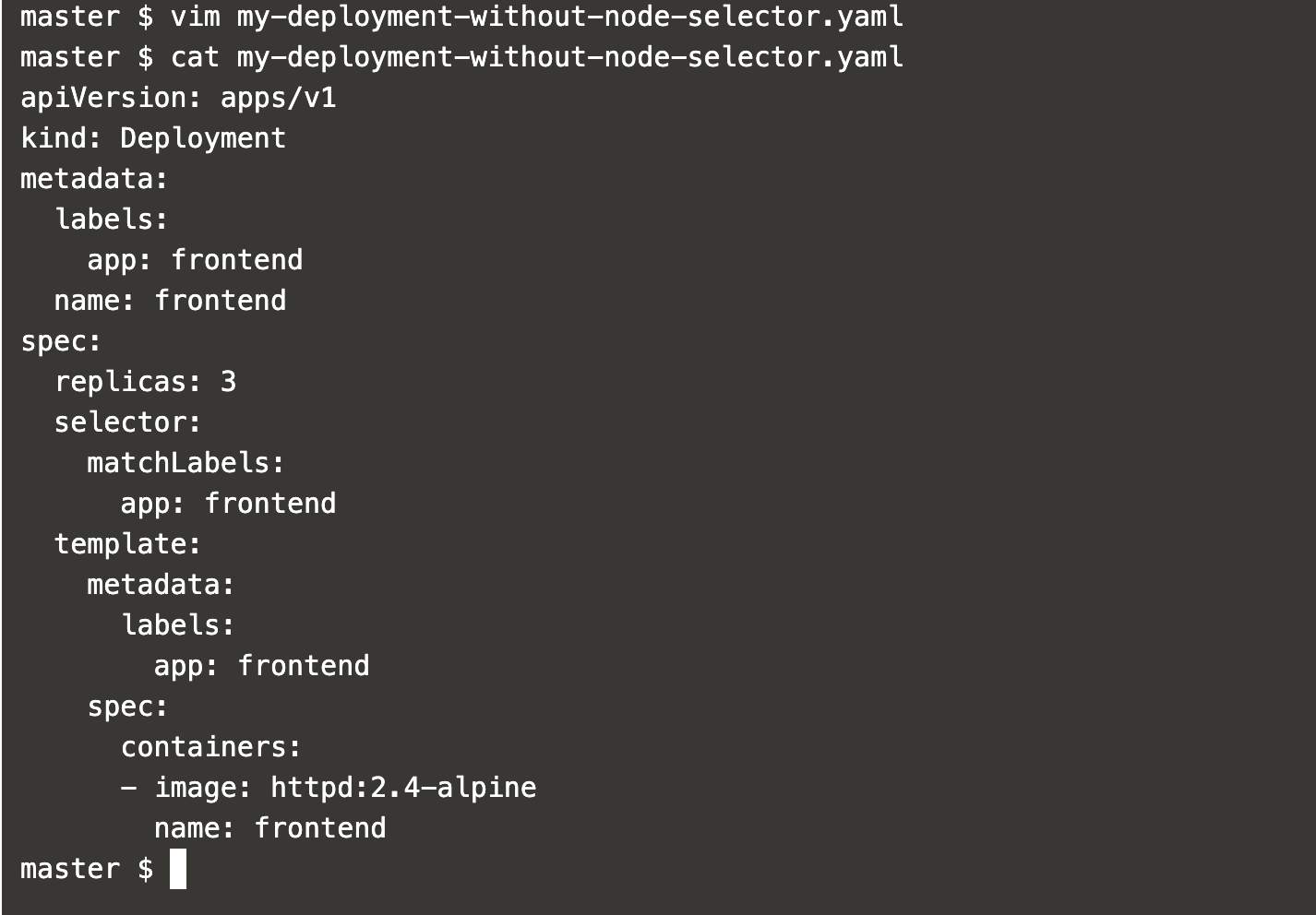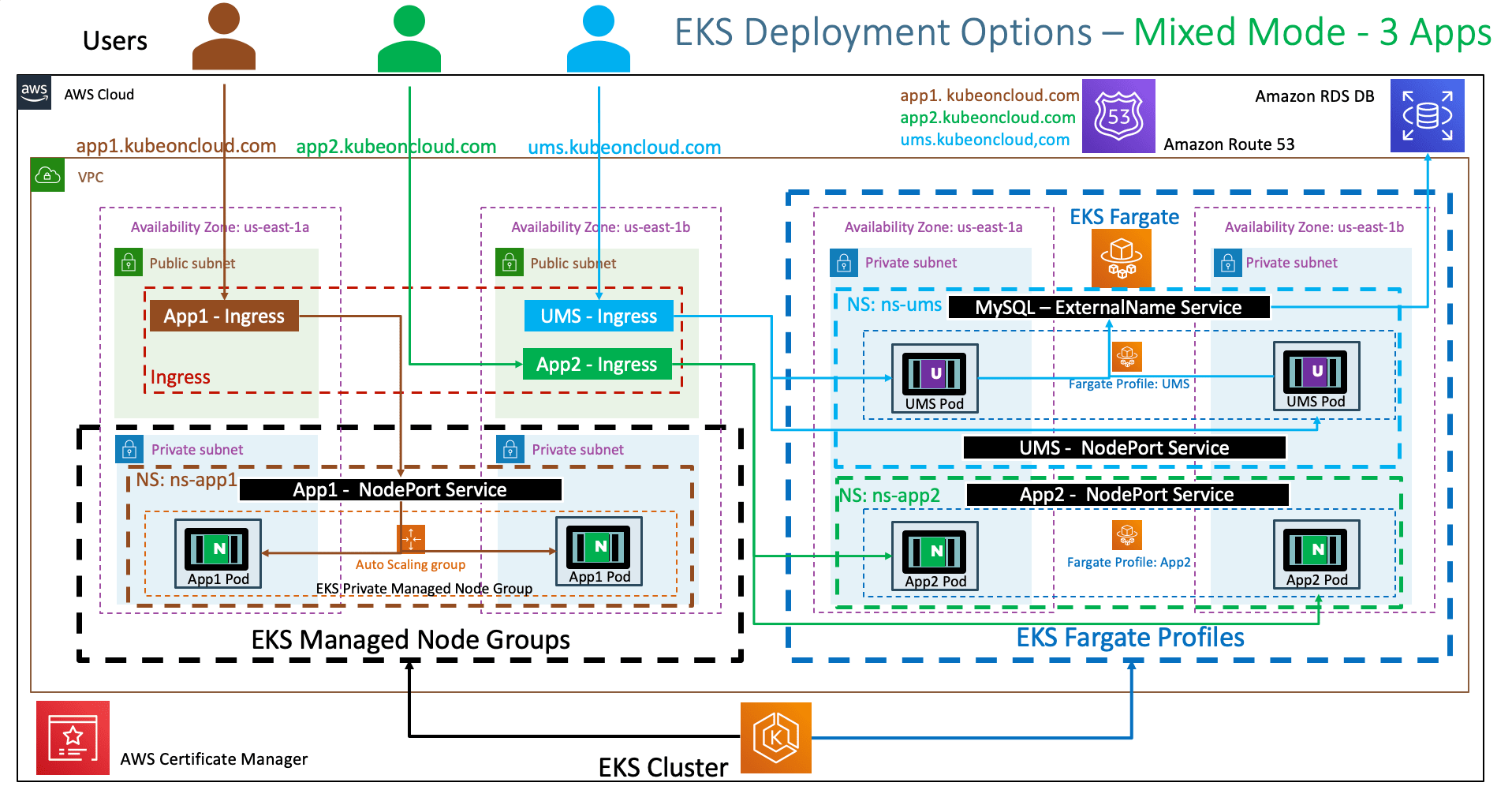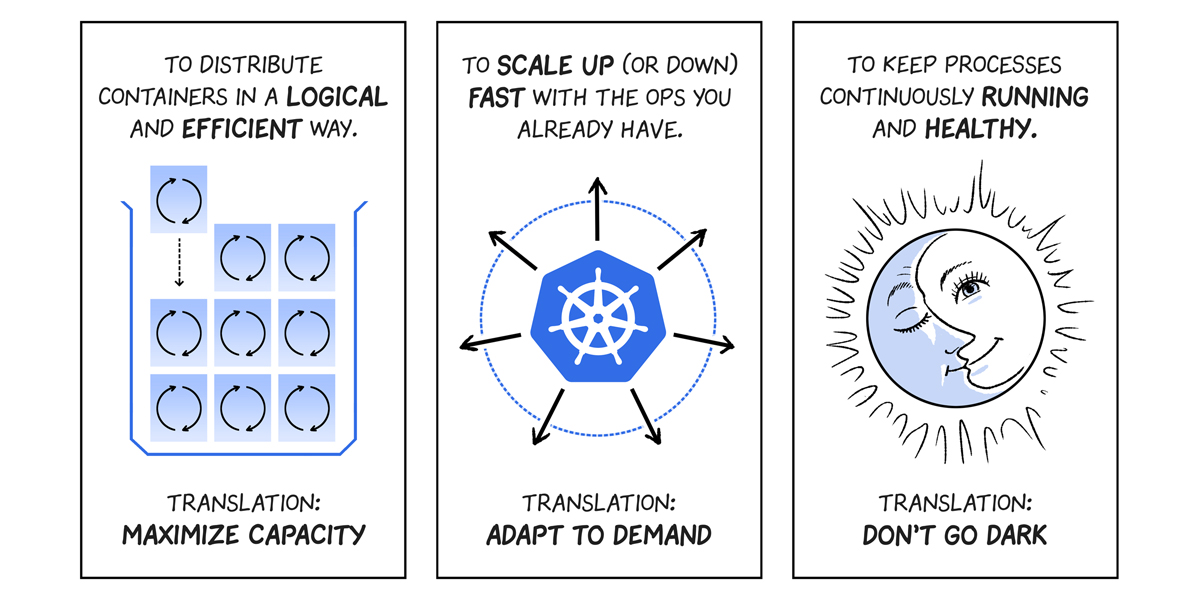40 labels and selectors in kubernetes
Labels | Kubernetes Platform - Kube by Example kubectl get pods --selector owner=michael. The --selector option can be abbreviated to -l, so selecting pods that are labelled with env=development can also be done using: kubectl get pods -l env=development. Oftentimes, Kubernetes objects support set-based selectors. Let's launch another pod that has two labels (env=production and owner=michael): Kubernetes: Usage and Understanding of Kubernetes Labels, MatchLabels ... Labels are key/value pairs that are attached to objects, such as pods. Labels are intended to be used to specify identifying attributes of objects that are meaningful and relevant to users. Labels can be attached to objects at creation time and subsequently added and modified at any time Each object can have a set of key/value labels defined.
Understanding Labels, Selectors and Annotations in Kubernetes There are two kinds of selectors. Equality-based and Set-based selectors. Equality-based requirement Equality based selectors help you filter resources equal to a certain key and value. You would following operators for equality based-requirements: = == != Example # this command would give us all resources with the env =prod label

Labels and selectors in kubernetes
Kubernetes Core Concepts - Labels, Selectors and Annotations What are Selectors in Kubernetes? Selectors are used to filter out objects based on their assigned Labels. Labels and Selectors goes hand in hand. For example Selectors will help us filter out objects like give all the application pods which are of type staging. Example syntax to define Selectors Labels, Selectors and Annotations for Kubernetes resources Labels and selectors in kubernetes Lesson 7 | 29:55. In this chapter, we will talk about what are labels, selectors, and annotations in the case of Kubernetes. Let's understand in detail about the equality based and set based requirements and what are the resources that support equality based requirements but not the set based requirements. en.wikipedia.org › wiki › KubernetesKubernetes - Wikipedia Just like labels, field selectors also let one select Kubernetes resources. Unlike labels, the selection is based on the attribute values inherent to the resource being selected, rather than user-defined categorization. metadata.name and metadata.namespace are field selectors that will be present on all Kubernetes objects. Other selectors that ...
Labels and selectors in kubernetes. Kubernetes Labels, Selectors, and Annotations | Getting Started This will open your CLI editor of choice and allow you to add and remove labels and other details. When you save and exit, the changes will apply. Selectors As their name suggests, label selectors allow you to identify the objects you have tagged with particular labels. Label selectors can either be equality-based or set-based. Labels and Selectors - Kubernetes - GitLab The label selector is the core grouping primitive in Kubernetes. The API currently supports two types of selectors: equality-based and set-based . A label selector can be made of multiple requirements which are comma-separated. In the case of multiple requirements, all must be satisfied so the comma separator acts as a logical AND ( &&) operator. The Guide to Kubernetes Labels Labels are key-value pairs used to attach identifying metadata to Kubernetes objects. Kubernetes provides built-in support for querying objects via labels and applying bulk operations on the subset... Using Kubernetes Annotations, Labels, and Selectors Annotations, labels, and selectors are used to manage metadata attached to your Kubernetes objects. Annotations and labels define the data while selectors provide a way to query it. Here are the differences between the three concepts, what they're designed for, and how you can use them to manage your resources. Annotations
Howtoforge Linux Tutorials. Howtoforge Linux Tutorials. › kubernetes-labels-selectorsKubernetes labels, selectors & annotations with examples We have used labels in some of the examples in previous articles, but here I will explain the usage of labels and other related terminologies. Labels. Labels give us another level of categorization, which becomes very helpful in terms of everyday operations and management. Labels are attached to Kubernetes objects and are simple key: value pairs. Kubernetes: Labels and Selectors - Linux Advise Hello Readers , In the last article we studied about manual scheduling of pods. Now continuing further let us discuss labels and selectors in kubernetes. Labels and selectors are in normal term a way to group things together. Labels and selectors allow us to group things together and filter them based on our needs. Labels are like properties of an object and selectors help in filtering these ... What is the difference between Label and Selector in kubernetes? Via a label selector, the client/user can identify a set of objects. The label selector is the core grouping primitive in Kubernetes. In a nutshell label selectors depend on labels to select a group of resources such as pods. For example a deployment selects a group of pods by a label selector in the deployment spec. Share
kubernetes.io › docs › referenceWell-Known Labels, Annotations and Taints | Kubernetes May 17, 2022 · Well-Known Labels, Annotations and Taints. Kubernetes reserves all labels and annotations in the kubernetes.io namespace. This document serves both as a reference to the values and as a coordination point for assigning values. Working with labels and selectors | Kubernetes Cookbook - Packt Working with labels and selectors Labels are a set of key/value pairs, which are attached to object metadata. We could use labels to select, organize, and group objects, such as Pods, ReplicaSets, and Services. Labels are not necessarily unique. Objects could carry the same set of labels. › kubernetes › kubernetesKubernetes - Labels & Selectors - Tutorials Point Labels selector are core grouping primitive in Kubernetes. They are used by the users to select a set of objects. Kubernetes API currently supports two type of selectors − Equality-based selectors Set-based selectors Equality-based Selectors They allow filtering by key and value. Matching objects should satisfy all the specified labels. blog.kubecost.com › blog › kubernetes-labelsThe Guide to Kubernetes Labels - Kubecost Blog 2. Know the Label Selection Methods. Kubernetes provides two ways of selecting objects with labels: equality and set-based selectors. Equality: You can select objects which are equal or not equal to one or more label values. You can have multiple selectors separated by commas, and all conditions must be met for a resource to match this selector.
certified-kubernetes-administrator-course/04-Labels-and-Selectors.md at ... Labels and Selectors. Take me to Video Tutorial; In this section, we will take a look at Labels and Selectors. Labels and Selectors are standard methods to group things together. Labels are properties attached to each item. Selectors help you to filter these items. How are labels and selectors are used in kubernetes?
Kubernetes helm或K8S是否使用spec.selector.matchLabels覆盖spec.template ... Kubernetes helm或K8S是否使用spec.selector.matchLabels覆盖spec.template.metadata.labels?,kubernetes,kubernetes-helm,Kubernetes,Kubernetes Helm,我有一个图表,我正在应用头盔v3,当我在本地渲染它时,它看起来像这样 apiVersion: apps/v1 kind: Deployment metadata: name: RELEASE-NAME-generic labels: app: generic chart: generic-1.1.2 release: RELEASE-NAME heritage ...
The Purpose of Labels and Selectors in Kubernetes 15 Jan 2021 • 1 min read. In short, labels are a way to group and reference an object. For instance, you could group all APIs with a label like type: api. Selectors are just a way to reference objects by labels. If we set a selector to type: api, then it would be referencing all objects with that label. This turns out to be a wildly useful ...
How to Provision Node Labels and Selectors in Kubernetes? (K8s) (K8s) Labels selectors are core grouping primitive in Kubernetes. They are used by the users to select a set of objects. Kubernetes API currently supports two types of selectors − Equality-based...
medium.com › @zwhitchcox › matchlabels-labels-andmatchLabels, labels, and selectors explained in detail, for ... Jul 15, 2018 · matchLabels, labels, and selectors explained in detail, for beginners Prequisites: Know what a pod, service, and deployment are Ok, this is pretty simple, but now one has lain it out for me, so ...
Labels and Selectors — Kubernetes on AWS 0.1 documentation Labels and Selectors ¶ Labels are key/value pairs that are attached to Kubernetes objects, such as pods (this is usually done indirectly via deployments). Labels are intended to be used to specify identifying attributes of objects that are meaningful and relevant to users. Labels can be used to organize and to select subsets of objects.
kubernetes.io › working-with-objects › common-labelsRecommended Labels | Kubernetes Jan 11, 2022 · You can visualize and manage Kubernetes objects with more tools than kubectl and the dashboard. A common set of labels allows tools to work interoperably, describing objects in a common manner that all tools can understand. In addition to supporting tooling, the recommended labels describe applications in a way that can be queried. The metadata is organized around the concept of an application ...
Using K8s Label Selectors in Go without doing it wrong Using labels.Selector. The labels.Selector interface is located in the apimachinery repo under pkg/labels/selector.go.It's used to read and query Kubernetes Objects via their labels. You should ...
Kubernetes, Labels and Selectors - Automated Ramblings Labels are a key/value formatted peice of metadata attached to an object within Kubernetes. Labels provide additional information about the object with relevance to the consumer or object. For example, a label can specify hardware characteristics of a node or if a workload is for testing of production. Labels implicitly group like objects ...
Labels And Annotations In Kubernetes - K21 Academy Label selectors are used for filter Kubernetes objects based on a set of labels. Selectors use a simple Boolean language. There are two kinds of selectors: Equality based and Set based. Equality based. Equality-based selectors allow filtering by label keys and values. Three kinds of operators are used: =, ==, != Example: If we wanted to list ...
Labels and Selectors - Kubernetes The label selector is the core grouping primitive in Kubernetes. The API currently supports two types of selectors: equality-based and set-based . A label selector can be made of multiple requirements which are comma-separated. In the case of multiple requirements, all must be satisfied so the comma separator acts as a logical AND ( &&) operator.
Labels and Selectors | Kubernetes The label selector is the core grouping primitive in Kubernetes. The API currently supports two types of selectors: equality-based and set-based . A label selector can be made of multiple requirements which are comma-separated. In the case of multiple requirements, all must be satisfied so the comma separator acts as a logical AND ( &&) operator.
6. Labels, annotations, selectors — Kubernetes Tasks 0.1 documentation Create service (only routable inside cluster). The service is assigned Cluster IP (DNS record is automatically created) which load-balance across all of the pods that are identified by the selector. $ kubectl expose deployment app1-prod.

Understanding Basic Kubernetes Concepts I — An Introduction To Pods, Labels, and Replicas | by ...
Labels - Unofficial Kubernetes The kubernetes.io/ prefix is reserved for Kubernetes core components. Valid label values must be 63 characters or less and must be empty or begin and end with an alphanumeric character ... Labels selectors for both objects are defined in json or yaml files using maps, and only equality-based requirement selectors are supported: "selector ...
A Kubernetes Guide for Labels and Selectors | Datree.io Labels can be used by both Kubernetes and homo-sapiens to organize and to select subsets of objects. When dealing with Kubernetes config files, labels are always added under the "metadata" section of the manifest. Labels vs annotations Annotations are also key-value pairs that are attached to objects and are used to describe Kubernetes resources.










Post a Comment for "40 labels and selectors in kubernetes"